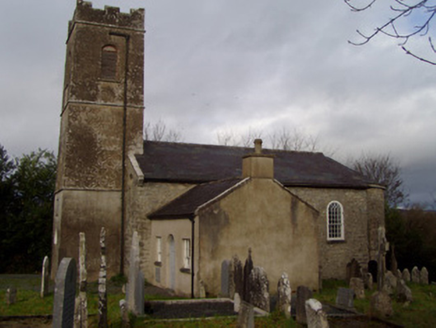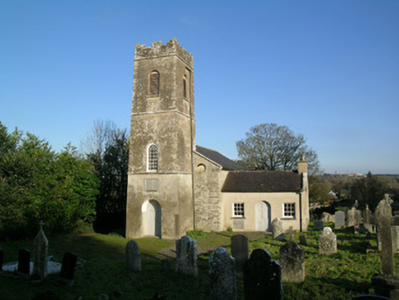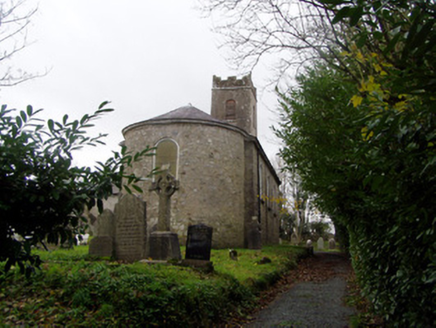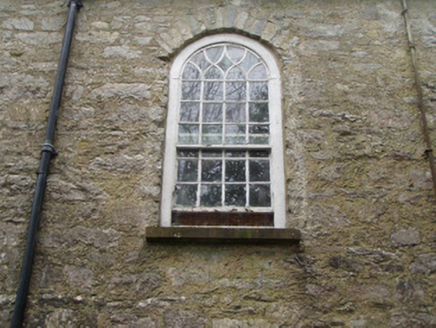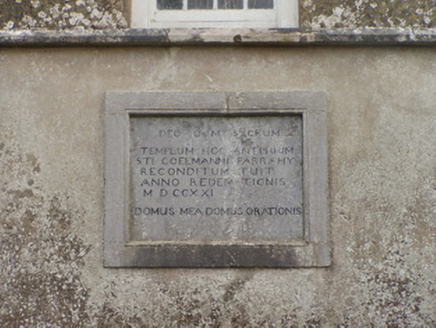Survey Data
Reg No
20901808
Rating
Regional
Categories of Special Interest
Architectural, Artistic, Cultural, Social
Original Use
Church/chapel
In Use As
Church/chapel
Date
1720 - 1725
Coordinates
168928, 110229
Date Recorded
08/09/2006
Date Updated
--/--/--
Description
Freestanding single-cell church, dated 1721, having three-bay nave elevations, three-stage projecting crenellated bell tower to west, slightly recessed round-plan apse to east and single-storey school house to south. Pitched slate roof with limestone copings and eaves course, moulded corbels to gables and cast-iron rainwater goods. Rubble limestone walls with decorative oval niches to west gable, on either side of tower. Rendered walls to tower having string courses dividing each stage. Inscribed date to tower, over entrance doorway. Round-headed openings to nave walls, apse and to second stage of tower, with stone sills, and having twelve-over-twelve pane timber sliding sash windows to nave and to tower, with ogee-headed topmost panes to upper sash, painted glass window to apse. Round-headed openings to top stage of tower having timber louvers. Round-headed door opening in west wall of tower having timber panelled double-leaf door. Interior has concave smooth-stucco ceiling to nave and apse with moulded cornice, square-headed opening in west wall of nave into tower and south wall into adjoining school with timber battened door, timber panelled wainscotting around apse, timber pews and pulpit, gas lamp holders attached to walls, stone paved central aisle with cast-iron vents for heating system, and stove in south wall of tower. Recent memorial plaque to author Elizabeth Bowen who lived adjacent to church, at Bowen's Court country house, now demolished.
Appraisal
This well-maintained occasionally-used church is an excellent example of what is now a very rare early eighteenth-century Church of Ireland church in County Cork. It has typical eighteenth-century features, such as the apse, stucco ceiling and round-headed openings. The timber windows and glazing are of particular artistic merit and give elegance to the building. The church has also strong cultural links with the writer Elizabeth Bowen who lived in the adjacent country house at Bowen's Court. The survival of the attached school house, now used as the vestry, gives it added social importance. The eighteenth-century plaque is informative and a rare example of its type.
